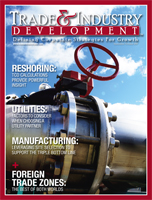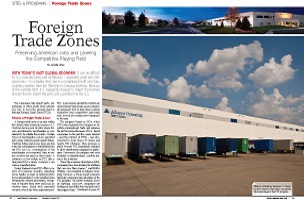The manufacturing process has changed dramatically over the years, but at the core it is still the art of creation and production. Everything from shoes to CPUs to airplanes owes its existence to manufacturing. And in the U.S., the long overlooked importance of manufacturing is starting to reemerge. One of the few bright spots in our halting economic recovery has been manufacturing, and now the realization is dawning on policy makers that a “knowledge-based” economy cannot stand on its own and be sustainable unless it is also linked to the application of that knowledge – which means manufacturing.
In this issue, we examine manufacturing from several different angles, and offer advice to executives looking to expand their facilities. Paul Hampton, of Newmark Knight Frank, offers pragmatic solutions to companies that need to add facilities but are also focused on environmental initiatives. In his article on working with utilities, Larry Gigerich, of Ginovus, provides significant insight into what indications to look for in choosing a worthy utility partner. And Harry Moser, founder of the Reshoring Initiative, provides bottom-line value in his examination of the total cost of ownership, and how it relates to sourcing components and siting facilities. Also, Jennifer Alten examines the benefits offered by Foreign Trade Zones, and Linda Dobel takes a look at some of the designated sites in North America. Douglas K. Woods, president of the Association for Manufacturing Technology, provides a clear snapshot of manufacturing in America and the developing trends. And Dennis Donovan, of WDG Consulting, charts the outlook for facility expansions throughout the rest of the year and into 2012.


